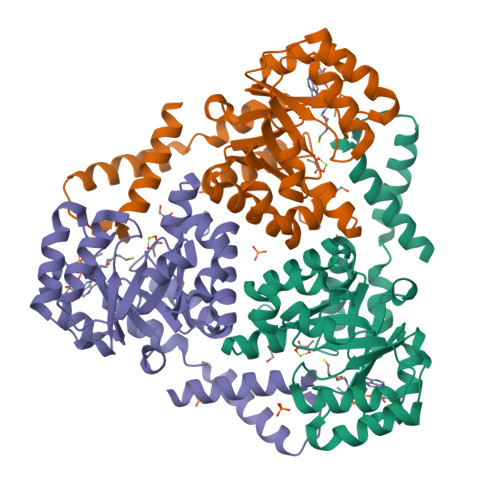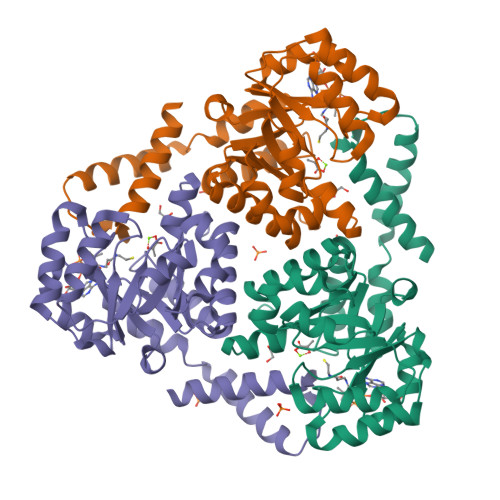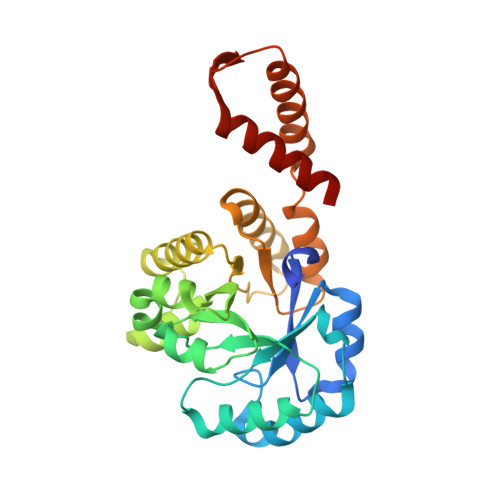An essential bifunctional enzyme inMycobacterium tuberculosisfor itaconate dissimilation and leucine catabolism.
Wang, H., Fedorov, A.A., Fedorov, E.V., Hunt, D.M., Rodgers, A., Douglas, H.L., Garza-Garcia, A., Bonanno, J.B., Almo, S.C., de Carvalho, L.P.S.(2019) Proc Natl Acad Sci U S A 116: 15907-15913
- PubMed: 31320588
- DOI: https://doi.org/10.1073/pnas.1906606116
- Primary Citation of Related Structures:
6AQ4, 6ARB, 6AS5, 6CHU, 6CJ3, 6CJ4 - PubMed Abstract:
Mycobacterium tuberculosis (Mtb) is the etiological agent of tuberculosis. One-fourth of the global population is estimated to be infected with Mtb, accounting for ∼1.3 million deaths in 2017. As part of the immune response to Mtb infection, macrophages produce metabolites with the purpose of inhibiting or killing the bacterial cell. Itaconate is an abundant host metabolite thought to be both an antimicrobial agent and a modulator of the host inflammatory response. However, the exact mode of action of itaconate remains unclear. Here, we show that Mtb has an itaconate dissimilation pathway and that the last enzyme in this pathway, Rv2498c, also participates in l-leucine catabolism. Our results from phylogenetic analysis, in vitro enzymatic assays, X-ray crystallography, and in vivo Mtb experiments, identified Mtb Rv2498c as a bifunctional β-hydroxyacyl-CoA lyase and that deletion of the rv2498c gene from the Mtb genome resulted in attenuation in a mouse infection model. Altogether, this report describes an itaconate resistance mechanism in Mtb and an l-leucine catabolic pathway that proceeds via an unprecedented ( R )-3-hydroxy-3-methylglutaryl-CoA (HMG-CoA) stereospecific route in nature.
Organizational Affiliation:
Mycobacterial Metabolism and Antibiotic Research Laboratory, The Francis Crick Institute, London NW1 1AT, United Kingdom.





















